- Home
- Peter Lovesey
The Stone Wife
The Stone Wife Read online
Also by Peter Lovesey
Sergeant Cribb series
WOBBLE TO DEATH
THE DETECTIVE WORE SILK DRAWERS
ABRACADAVER
MAD HATTER’S HOLIDAY
THE TICK OF DEATH
A CASE OF SPIRITS
SWING, SWING TOGETHER
WAXWORK
Peter Diamond series
THE LAST DETECTIVE
DIAMOND SOLITAIRE
THE SUMMONS
BLOODHOUNDS
THE VAULT
UPON A DARK NIGHT
DIAMOND DUST
THE HOUSE SITTER
THE SECRET HANGMAN
SKELETON HILL
STAGESTRUCK
COP TO CORPSE
THE TOOTH TATTOO
Hen Mallin series
THE CIRCLE
THE HEADHUNTERS
Other Fiction
FALSE INSPECTOR DEW
ROUGH CIDER
ON THE EDGE
THE REAPER
Copyright © 2014 by Peter Lovesey.
Published by
Soho Press, Inc.
853 Broadway
New York, NY 10003
Library of Congress Cataloging-in-Publication Data
Lovesey, Peter.
The stone wife : a Peter Diamond investigation / Peter Lovesey.
p. cm
ISBN 978-1-61695-393-5
eISBN 978-1-61695-394-2
1. Diamond, Peter (Fictitious character)—Fiction. 2. Police—England—Bath—Fiction. 3. Bath (England)—Fiction. I. Title.
PR6062.O86S76 2013
823′.914—dc23
2013019794
v3.1
Contents
Cover
Other Books by This Author
Title Page
Copyright
Chapter 1
Chapter 2
Chapter 3
Chapter 4
Chapter 5
Chapter 6
Chapter 7
Chapter 8
Chapter 9
Chapter 10
Chapter 11
Chapter 12
Chapter 13
Chapter 14
Chapter 15
Chapter 16
Chapter 17
Chapter 18
Chapter 19
Chapter 20
Chapter 21
Chapter 22
Chapter 23
Chapter 24
Chapter 25
Chapter 26
Chapter 27
Chapter 28
Chapter 29
Chapter 30
Chapter 31
Chapter 32
Chapter 33
About the Author
1
“Will somebody start me at five hundred?”
A card with a number was raised near the front.
“Thank you. Five-fifty. Six hundred. Six-fifty. Seven. Seven-fifty at the back. Eight.”
The bidding was keen by West Country standards. Morton’s auction house in Bath was used to lots being knocked down almost at once. This had a sense of energy, even though the faces were giving nothing away.
“A thousand.”
Four or five local antique dealers were still interested and Denis Doggart, the auctioneer, needed the help of his assistants to keep track of the small movements that signified bids.
“Two thousand. Two thousand two. Four on my left. Six. Eight. I have three thousand on the phone.”
Heads turned. Not everyone in the room had realised bids were being phoned in. This wasn’t a sale of impressionist paintings at Sotheby’s. It was only the regular quarterly disposal of bits brought in to the Bath office for valuation, many of them bric-a-brac or tat.
Doggart was unfazed. He had been told to expect two telephone bidders from New York and Tokyo.
“At three thousand.”
The man who had appeared to be pushing hardest shook his head. He’d reached his limit. But others were still in. The price mounted steadily, way past the valuation figure.
“At five thousand pounds.”
A stifled gasp came from the back where some onlookers had gathered.
The remaining bidders were regulars at auctions all over the West Country, except one, a dark-haired man in a cream coloured linen jacket and white shirt with a red bow tie. This stranger, more than anyone, was driving the sale. A spark of determination had kindled in his blue eyes. But who the hell was he? He’d obviously registered and been given the paddle bearing his number. He’d shown no interest in any of the hundred and twenty-eight lots that had gone before.
Doggart believed he recognised the man. He would have liked to check with his clerk to learn the name, but controlling the auction demanded total concentration.
After five thousand, the bidding would be stepped up by increments of five hundred pounds.
And was, with no sign of anyone faltering. Each fresh bid from the local dealers was immediately topped by the visitor.
“Ten thousand in the front.”
Bow Tie Man was in it to win it.
At last came a pause.
“All done?”
Far from it. A new bidder raised his card, Sturgess, a London dealer, who only made the trip to Bath when the catalogue contained something exceptional.
Unfazed, Bow Tie topped the bid.
The interest from Japan and America had ended somewhere between five and ten thousand. Sturgess and the mystery man could settle this between them. And now their bids were coming in with the pendulum precision auctioneers love.
“At twenty thousand pounds, then.”
Who wears a bow tie these days? A few doctors and academics. The occasional eccentric. Certain auctioneers.
After a moment’s consideration, Sturgess nodded for twenty-two thousand.
No hesitation in the response.
“Twenty-four thousand from the gentleman in the front. Are we there yet? A unique item of excellent provenance.”
A new, aggressive voice broke in: “Nobody move.”
The shock in the room was unimaginable. When an auctioneer is at work, his voice, and his alone, is all anyone expects to hear. The bidding is silent. An utterance from anyone else is an outrage.
If “Nobody move” was an order, it was not obeyed. After the collective jerk of surprise, all heads turned to see who had spoken.
A larger shock awaited. The speaker was wearing a black balaclava mask that covered his face. He was holding a handgun. He must have been standing all the time against the wall within ten feet of the auctioneer. He’d slipped on the mask and produced the gun and spoken his two words while all the attention was on the bidders.
Denis Doggart, on his rostrum, was supposed to be directing the show. He turned his head and said, “What’s this about?”
“Shut up,” The masked man said. “Everyone stay right where you are and nobody will get hurt.”
Doggart said, “This is intolerable.”
“I told you to shut it.”
If any doubt remained how serious the situation was, it evaporated when two more masked men with guns entered the saleroom from the door facing the rostrum. They marched up the aisle that was kept clear for safety reasons and took a grip on the handle of the wooden dolly supporting lot 129, the object currently under the hammer.
This was too much for the bidder with the red bow tie. “You can’t steal that,” he said in a shrill, appalled voice. “Get away.”
“Shut up, mister,” the first gunman said. “Get on with it,” he told his companions.
“It’s under auction. I made the last bid. No one is taking it.”
“Let them be, sir,” the auctioneer said. “They’re armed.”
“They’re not ha
ving it. It’s too precious.” Bow Tie was up from his chair and striding towards the men starting to shift the heavy burden. “Get your hands off.”
The steady build-up of adrenalin during the auction must have given him extra courage, blind, foolhardy anger at the crime being committed in front of everyone. He was a slight, middle-aged man, no match for the crooks except in strength of will. He grabbed the sleeve of the nearest and succeeded in tugging his hand away from the dolly.
The gunman swung around. He had the automatic in his right hand. He levelled it and squeezed the trigger.
The report echoed through the auction room, deafening everyone.
The force of the bullet sent Bow Tie Man crashing against a walnut table stacked with china. He hit the ground at the same time as a mass of cups, saucers and plates. Pandemonium followed, screams and shouts, some people diving for cover, others heading for the door.
The would-be thieves panicked like everyone else. Any thoughts of stealing lot 129 were abandoned without a word passing among them. All three dashed for the exit, stepping over their wounded victim.
A silver delivery van was waiting in the street outside with rear door open and a ramp in place. Two of the crooks dived in and hoisted the ramp aboard and the third slammed the door, dashed to the front and climbed in. The driver, obviously primed for the getaway, had the wheels in motion before the door closed. With a screech of rubber on tarmac, the getaway vehicle rounded the tight corners of Queen Square and was gone.
Inside the auction room, fumes of cordite hung in the air. People were kneeling beside the victim, wanting to assist, but a man shot through the belly needs more than first aid. Blood had seeped through his clothes and dribbled from his mouth. He had turned as grey as the lump of stone he’d been bidding for.
“Who is he?”
“No idea.”
“Doesn’t anyone know who the poor guy is?”
“He was bidding. He must have signed in.”
“Good point. We can check.”
“Someone better phone the police.”
“I already did,” Doggart said, stepping down from his rostrum. “They’re on their way and so is the ambulance.”
“Looks like he needs an undertaker’s van, not an ambulance.”
2
From saleroom to crime scene: a swift, harsh transformation. A forensics team was already at work in a cordoned area among the array of antique glass, silver and furniture.
There is only so much information you can get from looking at a shot corpse. Peter Diamond, Bath’s head of CID, had seen all he wanted, moved past and was taking more interest in lot 129. “Someone was killed for this?”
“Crazy,” Detective Sergeant Ingeborg Smith agreed. “As a motive for murder, this tops everything.”
“Topped him, for sure.” He passed his fingertips along the chipped surface. “It’s not even in good condition.”
“It’s antique,” Ingeborg said and added before realising he wasn’t being serious, “There are going to be signs of wear.”
“As I say when I look in my shaving mirror each morning.”
“Don’t.”
“Why would anyone want such a thing? It’s not decorative. Would you give it house room?”
“Speaking personally, no, but people were bidding good money for it.”
“Did you find out how much?”
“Twenty-four thousand and rising.”
“Twenty-four grand?” Diamond said on a high note that startled the CSI team behind him. “For this?”
The object in front of them, standing on a wooden dolly, was a slab of carved stone about one metre in length, half a metre wide and as thick as a mattress. Whoever had lifted it on was probably nursing a back strain.
“Can you make out what it is?”
“Isn’t it supposed to be someone on horseback?” Ingeborg said.
“Looks to me like a bunch of bananas.”
The face of the slab had been worked by a sculptor at some time in the remote past and most of the detail had long since been eroded. Thanks to the build-up of centuries of grime in the chiselled areas you could conceivably make out the outline of a horse and rider. If so, the horse had thick legs, which was no bad thing. Either the sculptor’s sense of proportion was faulty or the person in the saddle was an XXL.
“Does the writing give any clues?” Diamond asked.
Along the base was some damaged lettering: “N AMB RE ES Y SHE SAT.”
Ingeborg shook her head. “The last two words are all I can make out. I suppose they tell us the rider is female.”
He eyed the carving again. “You could have fooled me.”
“The auction catalogue may throw some light. There must be some about.”
He nodded. “See if you can find one while I have a word with the pathologist.”
Bertram Sealy in his blue zip-suit was squatting in a mass of broken china beside the body and speaking into an audio recorder. He put up his hand as Diamond approached. “Don’t come any closer with your big feet.”
Diamond let go of the do-not-cross tape as if he had never intended to creep under it. “I’m not new to this. First impressions?”
“No great loss,” the pathologist said.
There was a pause. “That’s callous even by your standards.”
“Bits of a tea service, cheap 1950s willow pattern. The table may take some repairing, but they’re clever, these restorers. It will take something off the value, even so.”
There is an unwritten law that the professionals hide their emotions, and black humour often comes to the rescue. Sealy’s laborious efforts always put an extra strain on his dealings with Diamond. “I was asking about the victim.”
“Him? He’s beyond repair.”
“I can see that. What’s your opinion?”
“I’m not a ballistics man.”
“And you’re not here because a few cups and saucers got broken.”
“Single shot to the abdomen seems to have killed him. The witnesses say he died in a short time, so it must have hit a vital organ. You don’t expect one bullet to the body to kill someone outright. In the skull, yes. In the belly, hardly ever.”
“Bad luck, then?”
“Not at all,” Sealy said. “I just told you it was quick. Could have been slow and painful. That’s what I would call bad luck.”
Diamond should have saved his breath. Whatever was said to Sealy got corrected. A sure sign of insecurity.
“You’re going to tell me you’ll find out more when you open him up.”
“And you can have a ringside seat.”
Diamond didn’t answer. He’d long ago stopped attending autopsies.
“Or will you send your deputy as usual?” Sealy added with a sly smile.
“There are more important matters to attend to in a murder enquiry,” Diamond said with dignity. “I’m better employed in the incident room than watching you pick over the entrails.” With that, he turned away to see where Ingeborg was.
She was waving the auction catalogue as she approached. “Found it, guv. Lot 129. Relief sculpture, medieval, depicting a bunch of bananas.”
The joke wouldn’t have been worthy of Sealy.
“Pull the other one, Ingeborg.”
“What it really says is that it’s a figure on horseback believed to be the Wife of Bath.”
“You’re serious now?”
“Chaucer.”
He didn’t respond. Memories from way back stirred in his brain, of struggling through a dog-eared school textbook much defaced by notes of uncertain reliability from previous users. Like most of his classmates, he’d survived with the secret aid the English master turned a blind eye to, a translation into modern verse even an eleven-year-old could understand.
Ingeborg took his silence for ignorance. “The Canterbury Tales.”
“Remarkable as it may seem to you, I once went to grammar school and passed an exam on Chaucer,” Diamond said. “Does it tell us any more?”
He sniffed and looked away. “Can’t remember everything I was taught.”
She stooped to examine the stone. “The words do seem to fit. If it’s a quote from the poem, then I begin to understand the interest.” She read some more from the catalogue: “Formerly in the collection of William Stradling of Chilton Priory, Somerset antiquarian.”
“A medieval carving of the Wife of Bath must be a rarity,” he said. “I still can’t see why someone had to be killed for it.”
“Especially as the killers left it behind,” Ingeborg said.
“Botched job. They panicked when the shot was fired. The whole idea of hijacking a block of stone strikes me as daft.”
“It’s not any old block of stone, guv.”
“But you can’t pick it up and run with it.”
“It was on wheels,” Ingeborg said, trying to be patient with him. “If they’d succeeded, we might have said they were master criminals. It was audacious. It involved planning—the masks, the firearms and the van. If there was any security, they cracked it. No one was prepared for three masked men interrupting the auction.”
“No one was prepared for a fatal shooting. It was never in the script. The victim’s actions weren’t predictable.”
She nodded. “As you say, he must have got shot because he created a moment of panic. Everyone was supposed to respect the guns and let the robbers get away. I would have. Wouldn’t you?”
“Every time,” Diamond said, looking down at the stone, “but then I can’t think why I’d want to own this. He must have wanted it badly. We need to discover what made it such a desired object.”
“I’ve bought things at auctions,” Ingeborg said. “The pressure builds, even at the low levels I was involved in. When the bidding is in the thousands it must be heartbreaking to see a bunch of crooks about to walk off with the prize.”
“What were you buying?”
Ingeborg reddened. “Shoes. Designer shoes.”
Diamond decided to speak to the auctioneer, whose name was on a card still displayed on the front of the rostrum: Mr. Denis Doggart. He’d been pointed out when they arrived, a stocky figure in a red corduroy jacket doing his best to cope with the crowd outside the entrance. After their contact details had been taken by the police the bidders had all been asked to quit the building. They weren’t going far. Most were dealers who had no intention of leaving Bath without their booty.

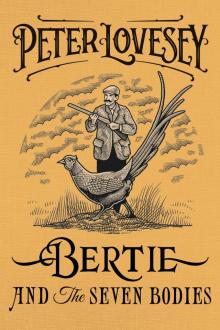 Bertie and the Seven Bodies
Bertie and the Seven Bodies The Headhunters ihmi-2
The Headhunters ihmi-2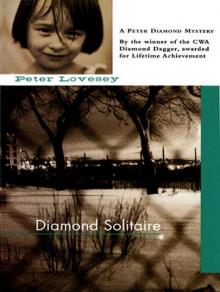 Diamond Solitaire pd-2
Diamond Solitaire pd-2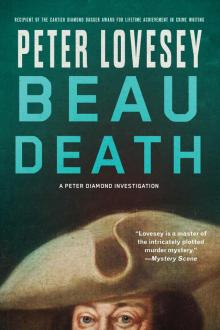 Beau Death
Beau Death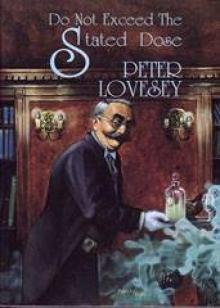 The Case Of The Dead Wait
The Case Of The Dead Wait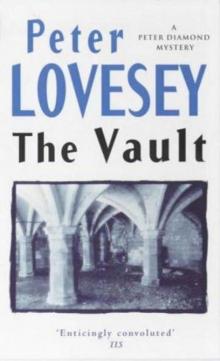 The Vault
The Vault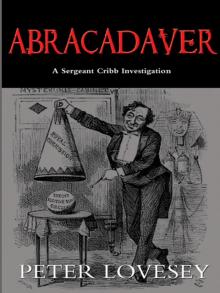 Abracadaver sc-3
Abracadaver sc-3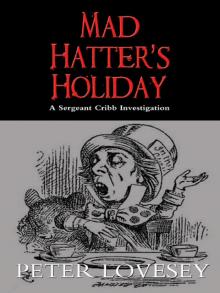 Mad Hatter sc-4
Mad Hatter sc-4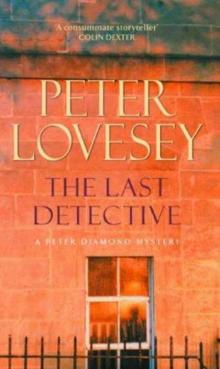 The Last Detective pd-1
The Last Detective pd-1 The Reaper
The Reaper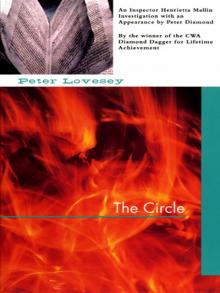 The Circle
The Circle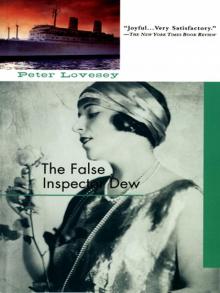 The False Inspector Dew
The False Inspector Dew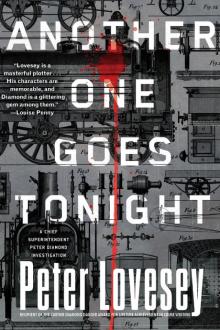 Another One Goes Tonight
Another One Goes Tonight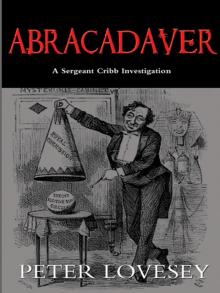 Abracadaver
Abracadaver Waxwork sc-8
Waxwork sc-8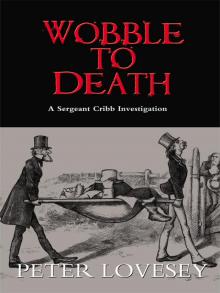 Wobble to Death sc-1
Wobble to Death sc-1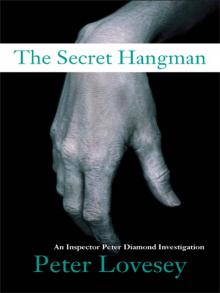 Peter Diamond - 09 - The Secret Hangman
Peter Diamond - 09 - The Secret Hangman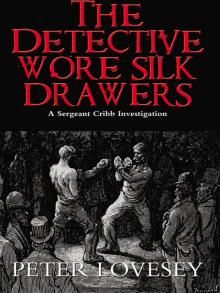 The Detective Wore Silk Drawers sc-2
The Detective Wore Silk Drawers sc-2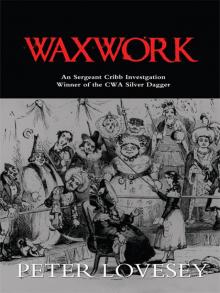 Waxwork
Waxwork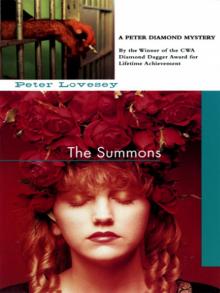 The Summons
The Summons Mad Hatter's Holiday
Mad Hatter's Holiday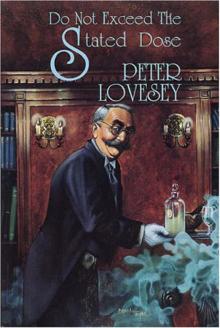 Do Not Exceed the Stated Dose
Do Not Exceed the Stated Dose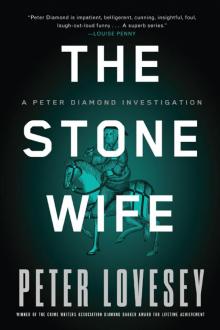 The Stone Wife
The Stone Wife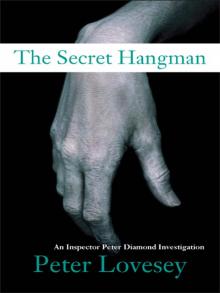 The Secret Hangman pd-9
The Secret Hangman pd-9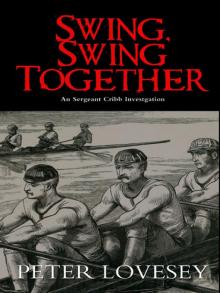 Swing, Swing Together sc-7
Swing, Swing Together sc-7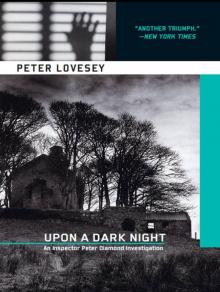 Upon A Dark Night
Upon A Dark Night Bloodhounds
Bloodhounds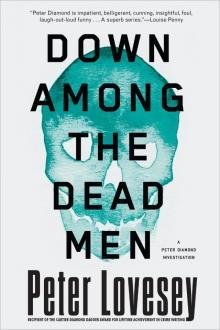 Down Among the Dead Men
Down Among the Dead Men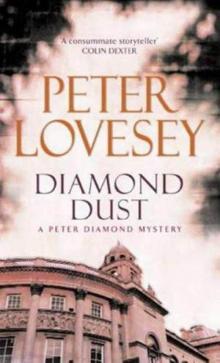 Diamond Dust
Diamond Dust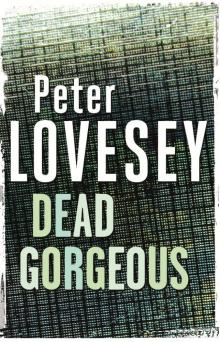 Dead Gorgeous
Dead Gorgeous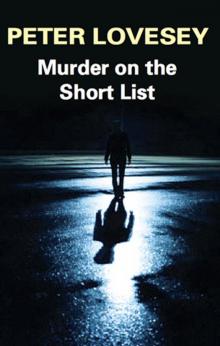 Murder on the Short List
Murder on the Short List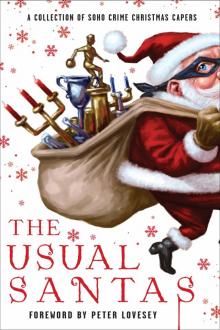 The Usual Santas
The Usual Santas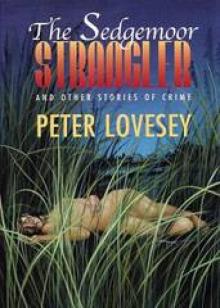 The Perfectionist
The Perfectionist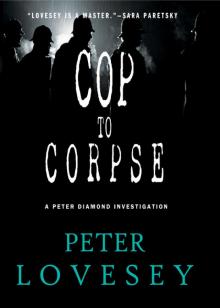 Cop to Corpse
Cop to Corpse Rough Cider
Rough Cider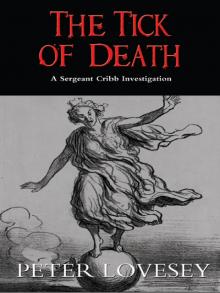 The Tick of Death
The Tick of Death Bloodhounds pd-4
Bloodhounds pd-4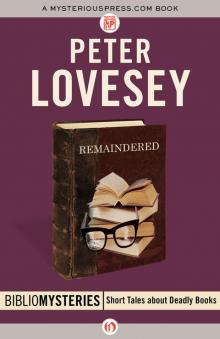 Remaindered
Remaindered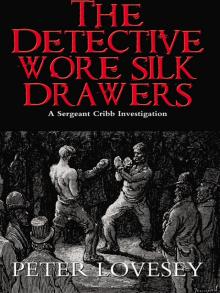 The Detective Wore Silk Drawers
The Detective Wore Silk Drawers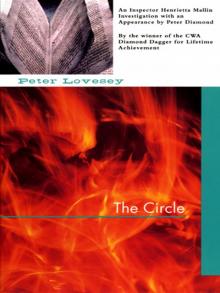 The Circle ihmi-1
The Circle ihmi-1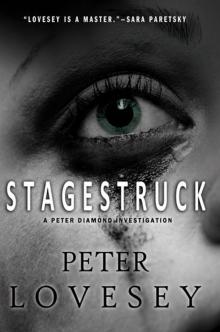 Stagestruck
Stagestruck The Secret of Spandau
The Secret of Spandau The Last Detective
The Last Detective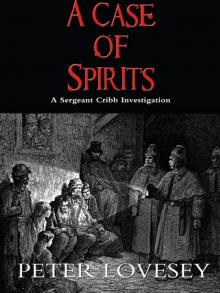 A Case of Spirits sc-6
A Case of Spirits sc-6 The Headhunters
The Headhunters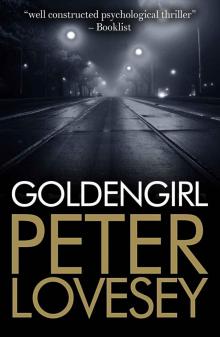 Goldengirl
Goldengirl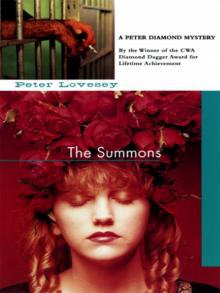 The Summons pd-3
The Summons pd-3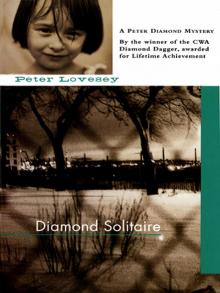 Diamond Solitaire
Diamond Solitaire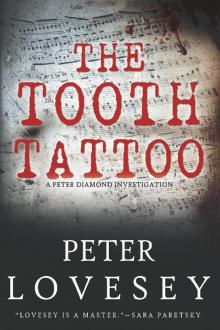 The Tooth Tattoo
The Tooth Tattoo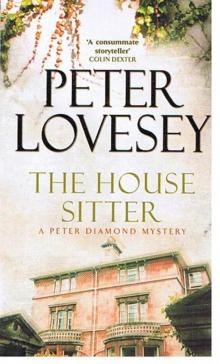 The House Sitter
The House Sitter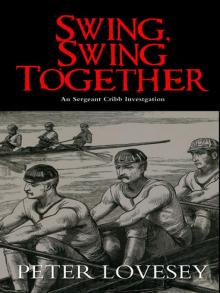 Swing, Swing Together
Swing, Swing Together